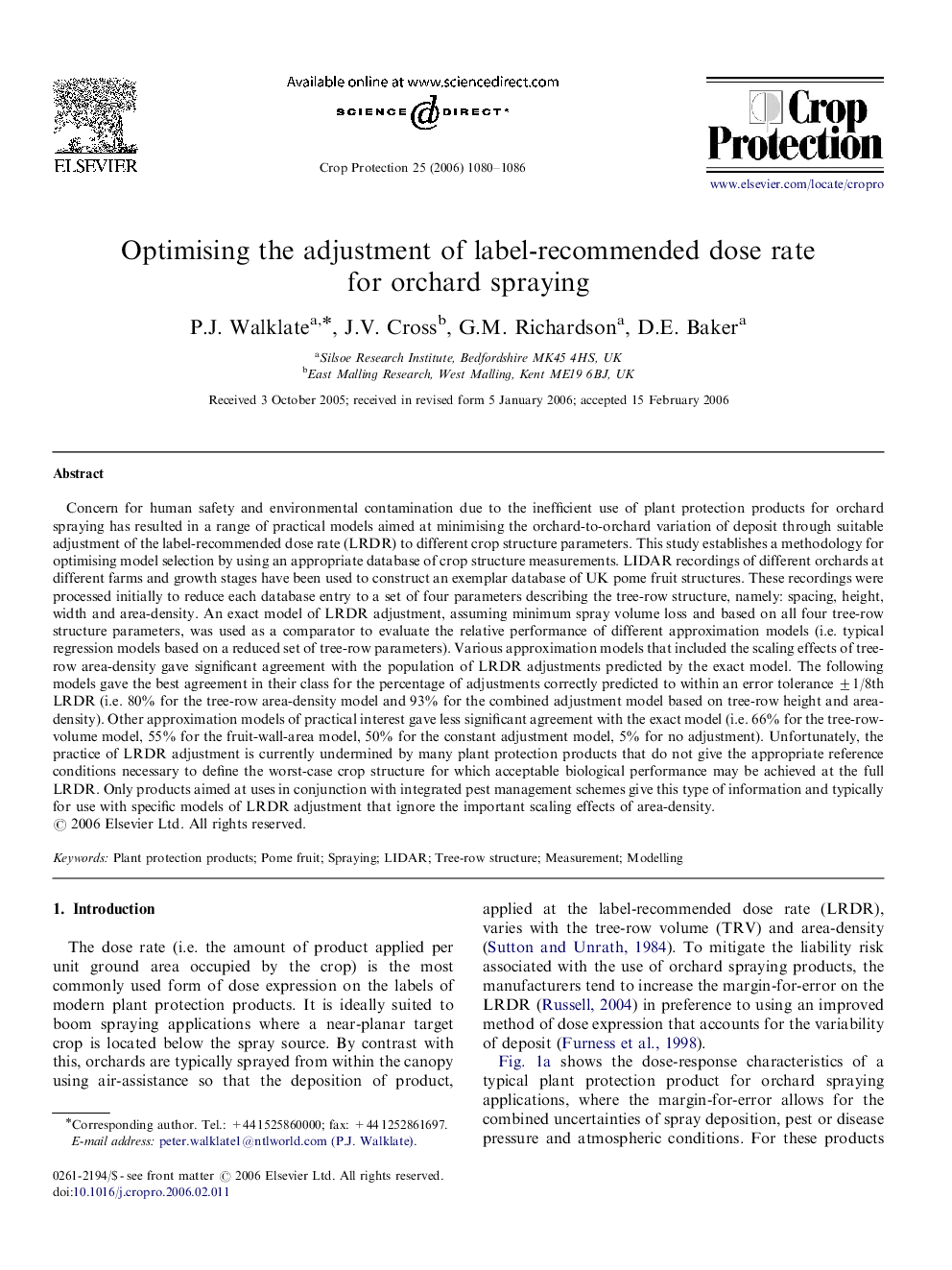| Article ID | Journal | Published Year | Pages | File Type |
|---|---|---|---|---|
| 4507981 | Crop Protection | 2006 | 7 Pages |
Abstract
Concern for human safety and environmental contamination due to the inefficient use of plant protection products for orchard spraying has resulted in a range of practical models aimed at minimising the orchard-to-orchard variation of deposit through suitable adjustment of the label-recommended dose rate (LRDR) to different crop structure parameters. This study establishes a methodology for optimising model selection by using an appropriate database of crop structure measurements. LIDAR recordings of different orchards at different farms and growth stages have been used to construct an exemplar database of UK pome fruit structures. These recordings were processed initially to reduce each database entry to a set of four parameters describing the tree-row structure, namely: spacing, height, width and area-density. An exact model of LRDR adjustment, assuming minimum spray volume loss and based on all four tree-row structure parameters, was used as a comparator to evaluate the relative performance of different approximation models (i.e. typical regression models based on a reduced set of tree-row parameters). Various approximation models that included the scaling effects of tree-row area-density gave significant agreement with the population of LRDR adjustments predicted by the exact model. The following models gave the best agreement in their class for the percentage of adjustments correctly predicted to within an error tolerance ±1/8th LRDR (i.e. 80% for the tree-row area-density model and 93% for the combined adjustment model based on tree-row height and area-density). Other approximation models of practical interest gave less significant agreement with the exact model (i.e. 66% for the tree-row-volume model, 55% for the fruit-wall-area model, 50% for the constant adjustment model, 5% for no adjustment). Unfortunately, the practice of LRDR adjustment is currently undermined by many plant protection products that do not give the appropriate reference conditions necessary to define the worst-case crop structure for which acceptable biological performance may be achieved at the full LRDR. Only products aimed at uses in conjunction with integrated pest management schemes give this type of information and typically for use with specific models of LRDR adjustment that ignore the important scaling effects of area-density.
Related Topics
Life Sciences
Agricultural and Biological Sciences
Agronomy and Crop Science
Authors
P.J. Walklate, J.V. Cross, G.M. Richardson, D.E. Baker,
